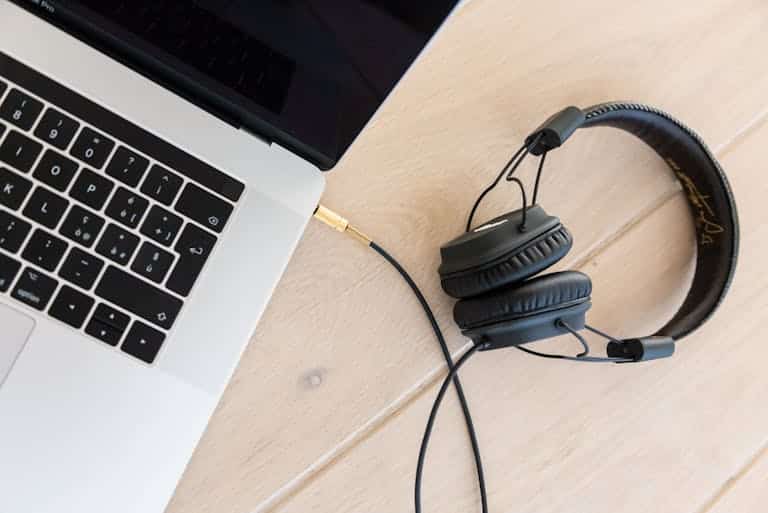Hearing one’s voice in a headset can be perplexing and distracting, disrupting the intended clarity of communication or audio enjoyment. Fortunately, this common issue has identifiable causes and relatively simple solutions. So, you might be wondering: Why can I hear myself in my headset?
In the dynamic landscape of digital communication, staying informed about troubleshooting techniques empowers users to make the most of their audio devices while minimizing disruptions. By taking a thoughtful and comprehensive approach to resolving echo issues, users can enjoy the benefits of their headsets without the interference of unwanted feedback.
Why Can I Hear Myself in My Headset | Reasons & Solutions For Hearing Yourself in Your Headset
So, why can I hear myself on my headset? Understanding the reasons behind hearing your voice in a headset is crucial to effectively addressing the issue. Let’s explore the common factors contributing to this echo problem.
1. Others Speakers
Echoes caused by other speakers are a common scenario in online communication. This situation often arises when individuals use open speakers instead of headphones during conversations.
The sound from their speakers is then picked up by their microphones, creating a feedback loop that introduces your voice back into the audio stream. This echo can be particularly pronounced during calls, leading to frustration and reduced call quality.
To address this, communication etiquette becomes crucial. Politely request that others in the conversation switch to headphones or reduce their speaker volume. Alternatively, ask them to move farther away from their speakers to minimize the chance of sound feedback.
Educating those you communicate with about the impact of open speakers on call quality can contribute to a more echo-free experience for everyone involved.
2. Other Devices
In the era of multifunctional devices, many computers come equipped with integrated microphones, often located in webcams or laptops. When your headset and another recording device are active simultaneously, it can lead to an echo. Disabling unnecessary recording devices is a practical solution to this problem.
Navigating the sound settings on your computer provides access to a list of recording devices. Right-click on any device, not your headset, and select “Disable.”
This ensures that only your headset actively captures audio input, reducing the likelihood of an echo. Regularly checking and managing your recording devices can prevent unexpected conflicts and maintain a smooth audio experience.
3. Microphone Boost
Microphone Boost is a feature found in certain sound cards that amplifies the input signal from the microphone. While this can enhance sensitivity, it may also contribute to an echo, especially if not properly configured. Disabling Microphone Boost is a recommended step in troubleshooting echo issues.
To disable Microphone Boost, access the Sound window on your computer by following the path “Start | Control Panel | Hardware and Sound | Sound.” Once in the Sound window, navigate to the “Recording” tab.
Right-click on your headset, select “Properties,” and go to the “Levels” tab in the Microphone Properties window. Uncheck the “Microphone Boost” option, click “Apply,” and close the window.
This adjustment ensures that your microphone operates at a standard level without unnecessary amplification, potentially reducing the occurrence of an echo. Regularly reviewing and optimizing your microphone settings can help maintain a balanced audio environment.
4. Mic Monitor
Mic Monitor, a feature in some headsets, gives users real-time feedback on their voice. While this can be beneficial for self-monitoring, it may introduce a delay in the playback, leading to an echo effect. Disabling the Mic Monitor is a practical solution to mitigate this issue.
Return to the Microphone Properties window for your headset, which is typically accessible through the sound settings on your computer. Click the “Listen” tab and ensure that the checkbox next to “Listen to this device” is unchecked.
If the box is checked, a loop is created where your microphone output is played back to your headset with a delay, resulting in an echo. Unchecking this option eliminates the loop, providing a more seamless audio experience.
Technology hiccups are inevitable, but users can confidently navigate these challenges with knowledge and a proactive approach. Regularly reviewing and adjusting audio settings, considering the context of communication, and fostering awareness among fellow users collectively contribute to a smoother, more enjoyable audio experience. Now you know the answer – Why can I hear myself in my headset?
Final Words
In conclusion, the issue of hearing yourself in your headset is a common occurrence with manageable solutions. Understanding the distinct reasons behind this problem allows for systematic troubleshooting and implementing targeted fixes. Each solution addresses a specific aspect, from others’ speakers and additional recording devices to Microphone Boost and Mic Monitor features. I hope you know why I can hear myself on my headset.
Some of the links in this post are affiliate links. This means if you click a link and make a purchase we will receive an affiliate commission at no extra cost to you.
